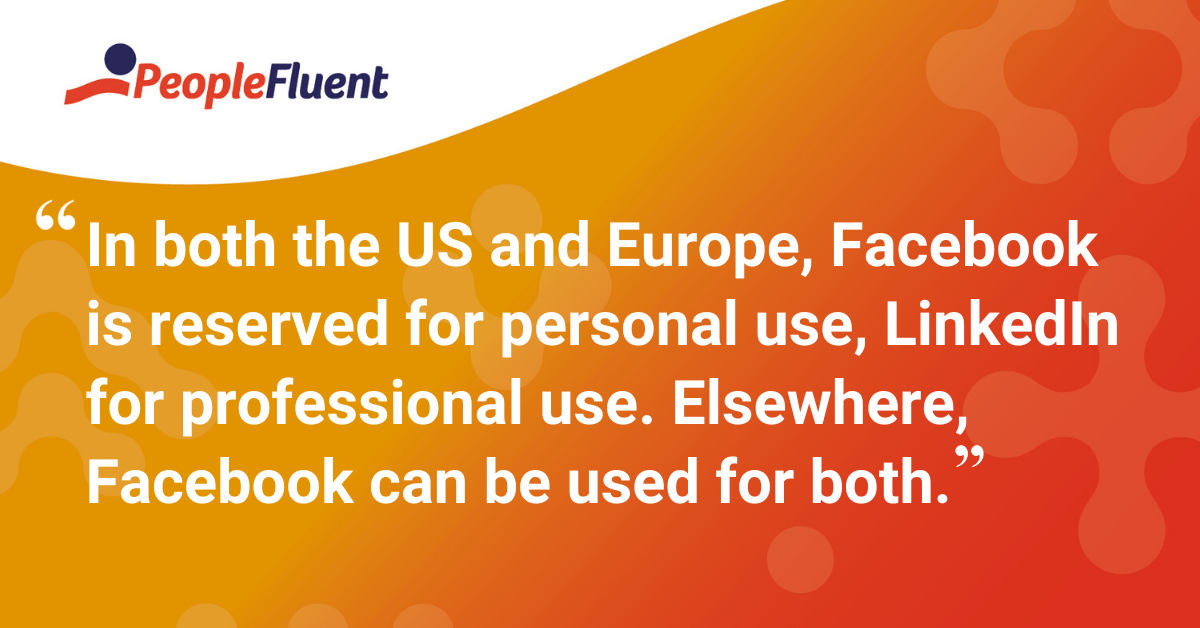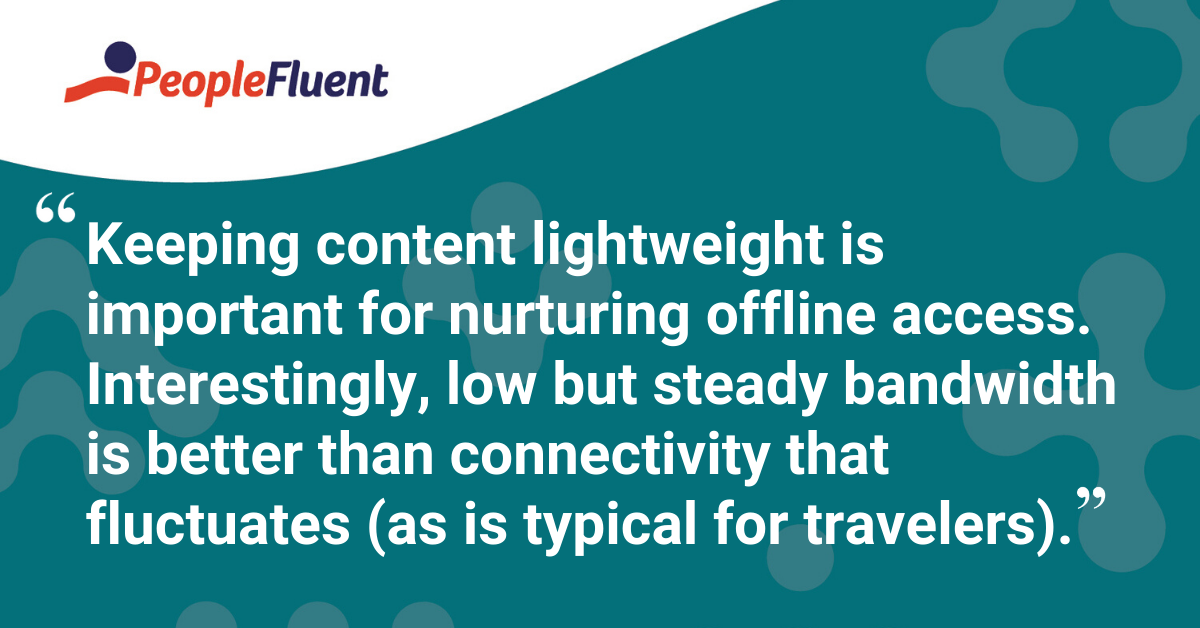Published: Aug 7, 2019Time to read: 6mins Category: Learning
Powerful Remote Learning: No Internet? No Problem!
Remote learning is challenging. How do you prime a learning ecosystem to let your learners access content, even when they’re offline? This blog post explores how one global organization tackles this issue, ensuring that learning programs can be used in some of the poorest, most remote places in the world.
What is the Demand for Remote Learning?
No internet? No problem!
Whether it’s mentoring in a remote African village, accessing vital support in a hospital, or making the most of travel time, there’s a massive demand for completing learning when bandwidth isn’t readily available.
For many organizations, these restrictions can apply when the learner’s moment of need is greatest. So, how can you tackle this issue?
Talented Learning recently ran a webinar with PeopleFluent and Humentum, exploring how they tackle the challenge of accessing training courses in some of the most remote corners of the world.
Humentum supports over 300 global organizations within the charity sector, hosting over 90 global learning platforms through PeopleFluent LMS. With 980 courses (as of July 2019) delivered in 164 countries, they’re keenly familiar with the challenges of providing offline learning.
Recommended related reading: 'The 13 Must-Have Features of a Learning Management

Global Demographics and Learner Needs Are Constantly Changing
The demand for remote learning has grown substantially thanks to the smartphone.
And we can’t assume that the way we use our phones in the US or Europe is the same across the globe. For instance, in both the US and Europe, Facebook is mostly reserved for personal use, whereas LinkedIn is for professional use. Elsewhere, Facebook can be used for both.
Africa, the Middle East, and the Indian sub-continent have now reached a stage where they are mobile-first. The median age of Africa’s population in 2019 is an astonishing 19.4. This means that half of its 1,322,687,994 population is under 20.
This growing mobile-first market is also far happier using personal devices than the US or European markets, who generally expect a work phone to be provided. There are benefits to using your own device for learning programs, but it’s not yet the accepted norm in western markets.
The way we learn is changing too. The power of informal, social, and on-the-job learning are now recognized as vital links in the learning chain. These are all supported by technologies behind digital learning. Mentoring can also be supported. This may be seen by completing task lists and saving photos (‘proof of completion’) within the Learning Management System (LMS) while offline—the actual content uploads can happen when bandwidth allows.
A typical learner journey (for Humentum) looks like this:
- User reaches their regional office before embarking on a mission to a remote village
- Accessing Wi-Fi, they download courses onto their app-based LMS (on their phone)
- They complete their training during their 8-9 hours+ traveling
The above scenario shows how with a considered setup, you can support a blended learning program, even in challenging conditions.

‘Light’ Content Encourages Offline Learning
Humentum has seen courses being completed on 3G bandwidth in Tibet. This proves the point that accessing an LMS can require surprisingly little bandwidth. However, keeping content lightweight is important for nurturing offline access. Interestingly, low but steady bandwidth is better than connectivity that fluctuates (as is typical for travelers).
So how can eLearning content be made lightweight? Here are four steps to getting it right:
- Have a defined Minimum Viable Product (MVP)
- Remove unnecessary ‘bells and whistles’ – interactive features are bandwidth-heavy
- Ensure videos are lightweight
- Divide content catalog according to ‘weight
The last point is interesting, as it offers users different options depending on how much bandwidth they anticipate they’ll have.
It’s worth stressing here that ‘lightweight’ content should be designed that way from the off. If you try to cut-down ‘full bandwidth’ versions, you’ll inevitably impact the quality.

How Do You Cater for Next-Generation Video in Hard to Reach Places?
Video is such a powerful tool that it’s worth keeping, despite a heavy load time. Ross Coxon, Director of Learning Collaborative at Humentum, says that the organization tried alternatives, such as podcasts and audio transcripts. They found that not only was engagement lower, they were also more time-consuming to create, as they lacked features such as auto-transcribe.
Video is also an effective way to recreate ‘dangerous’ scenarios. For example, a video filmed inside a van approaching a roadblock in Nigeria gives the learner more a sense of what to expect that other formats can’t match. You can hear the conversations within the van and ask the learner to spot potential dangers.
So how can you ensure your learning ecosystem supports video? There are two key components that together can offer a seamless learner experience:
LXP - A good Learner Experience Platform (LXP) helps organizations capture and distribute knowledge through easy content creation. User-generated or L&D-led video content can be seamlessly integrated into an LMS.
LMS - offers the benefits of blended learning, so regulatory training can sit alongside video features. When setting up for offline access, it’s important to allow multiple users to log in on the same device.

Quick Distribution Thanks to Speedy Translation
Expanding on Humentum’s need for quick global distribution of video, it’s worth noting that accurate and speedy translation can now be applied to videos through LXPs such as Instilled.
This is useful if your learners are located in different countries or have different language requirements. Learning videos can be created and sent out to 20+ countries in the same afternoon. Before today’s technology, this was a service that used to cost lots of time and money.
But now, using real-time subtitling via a Google API algorithm and natural language processing, the service has an accuracy rate of about 95 percent. Subtitles can be reviewed and edited at any time, allowing for a quality check to take place. If an error does make it through, users have the option to note or question this in the video.
For more on how Humentum uses their LMS to give life-changing training in remote parts of the world, check out this case study.
Ready to talk about your learning and training needs?
Design, deploy, track, analyze and report on enterprise learning and compliance programs. PeopleFluent helps you execute your programs seamlessly, so employees upgrade their skills and you get results.